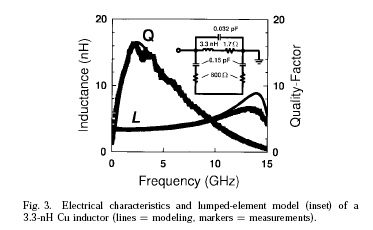testing test
Member level 3
Hello,
What is a Quality Factor? Should its value be high or low?
Thank you!
What is a Quality Factor? Should its value be high or low?
Thank you!
Follow along with the video below to see how to install our site as a web app on your home screen.
Note: This feature may not be available in some browsers.

WimRFP said:Hello,
From your last post, I don’t know what you are designing, is it an inductor (on purpose) or something that has to radiate (antenna)?
Some more info might be helpful
But this is the Q factor diagram for spiral antenna then why are you saying it's not an antenna?FvM said:The above Q diagram is obviously related to an inductor, that can be described mainly by a lumped element equivalent circuit.
This is another word for being sufficient small related to the signal wavelength and not acting as an antenna.